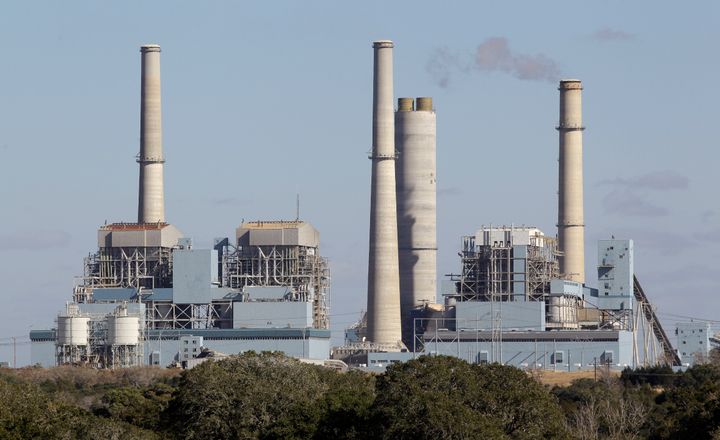
This post was co-authored by Sharon Guynup
A May 25th Wall Street Journal op-ed ("The Myth of Killer Mercury") accuses the Environmental Protection Agency (EPA) of fabricating evidence to support their proposed rule to limit mercury and other toxic emissions from coal-fired power plants, charging the agency with having a hidden agenda: destroying the hydrocarbon industry in favor of "unreliable renewable energy."
That's quite a claim. We don't think the EPA has a hidden agenda; we think it has a mandate to protect public health. We do, though think the authors' agenda is to use a thinly veiled science-sounding attack on the EPA to support corporate interests. The authors also claim the rule will raise electrical costs and scare people away from eating seafood, and deny EPA estimates that pollution-cutting measures will save 17,000 lives and $140 billion in health care costs.
It's no surprise. One author, Willie Soon, an astrophysicist, is a vocal climate change denier with no published public health research. The other, Paul Driessen, is a "senior policy advisor" (read: lobbyist) for something called the Center for a Constructive Tomorrow, whose leader has written, "Never before in my lifetime has the danger been so real, so close, so palpable. The threat, however, is not from man-made global warming, but from man-made hysteria." They dismiss mercury risks with the noteworthy line: "tons of mercury naturally present in seawater have never posed a danger to any living being."
We wish. For 50-plus years, scientists who actually study mercury's effects on living beings have known that in-utero or childhood exposure permanently impairs brain development, impacting memory, attention span, speech, and motor skills, and in severe cases, causing cerebral palsy, seizures or blindness.
Recent studies have actually lowered the recognized threshold for safe prenatal exposure, and have linked mercury to heart disease in adults. High exposures have other serious effects, from tremors and memory loss to kidney damage.
Soon and Driessen dismissed the need for regulation by citing inflated statistics on amounts of natural mercury in the environment. They claim that mercury coming from volcanoes, the oceans, and all natural sources totals roughly 10,000 tons yearly. Authoritative estimates published last year place the figure closer to 5,200. And while Soon and Driessen purport that 200,000,000 tons of mercury occur naturally in the ocean, University of Connecticut mercury expert Robert Mason estimates total mercury in the ocean -- including from human-produced sources -- at much less: 350,000 tons.
They say that power plants produce 0.5 percent of the mercury we breathe. But that's irrelevant: methylmercury in fish poses the danger and accounts for most of our exposure. In water, bacteria convert the element to its more toxic form, methylmercury. It concentrates up the food chain in freshwater and ocean fish, reaching dangerous levels in large predators like tuna, swordfish and shark.
To further assert no harm, the authors cited the Seychelles Child Development Nutrition Study's conclusions that there are "no measurable cognitive or behavioral effects" in children who eat several servings of ocean fish every week. But this past January, a published, peer-reviewed analysis showed that prenatal mercury exposure both reduced fish oil's beneficial effects on the developing brain and damaged the brain: babies with high in-utero exposure tested lower as infants and toddlers than those with less exposure.
The authors also dismissed the world's most comprehensive research to date, a 25-year Faeroe Islands study that has measured methylmercury levels in 1,022 pregnant women and their newborns and tracked children's cognitive development into their teens. That study has documented long-lasting cognitive impacts from prenatal methylmercury exposure. Most of these women's exposure came from eating pilot whale meat, but methylmercury has the same effects on the developing brain whether it comes from pilot whale or tuna. According to EPA estimates, more than 300,000 infants are born each year having been over-exposed to mercury in the womb. That's a problem.
Eating too much high-mercury seafood certainly can and does make people sick, but it's possible to eat seafood safely. One can reduce exposure by eating smaller types of fish, and by reducing the frequency of fish meals. Coal-backers say that environmentalists are scaring people away from seafood, whose benefits, they claim, outweigh the risks. But that's not the point. The point is that mercury levels in seafood have risen because of mercury pollution -- most of which comes from power plants.
And yet: House Republicans intend to introduce legislation to delay the EPA's proposed mercury and air toxics standards.
Although the Clean Air Act in 1990 charged the EPA with regulating air pollutants, including mercury, 21 years later there remain no national limits on the amount of mercury coming from power plant smokestacks.
Much of that mercury falls back to earth near its emission source, creating toxic hotspots. An EPA-funded study traced almost 70 percent of the mercury in Ohio Valley rainwater to local coal-fired power plants. And roughly half of the nation's lakes and reservoirs have unsafe mercury levels, according to EPA estimates.
Mercury pollution is of such concern globally, the United Nations Environment Programme is currently drafting a mercury-reduction treaty.
Coal burning power plants emit about 40 percent of U.S. mercury pollution. EPA efforts to reduce this hazard through emissions regulation is completely appropriate: they are doing their job as defined by Congress -- and we -- even the Wall Street Journal -- should let them protect our health, as they are tasked to do.
